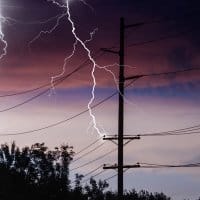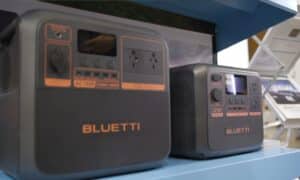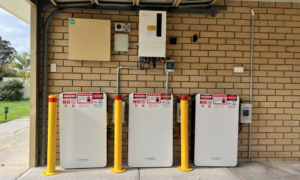The Energy Networks Association may have just made itself a very unpopular organisation among energy-efficient and solar households in Australia.
Big Energy is in big trouble.
Pushed by higher power prices and acting on increasing environmental awareness, millions of Australians have been taking action to reduce their electricity bills; by becoming more energy-efficient and/or installing solar power systems.
Fed up with their treatment by the incumbents, many Australians may also take the next step of installing battery storage and ditching the grid altogether.
The time has long passed since Big Energy finished laughing at solar panels. Even the most cynical power network execs appear to be trembling in their boots as to what power to, for and by the people means.
The Energy Networks Association, which represents electricity transmission and distribution businesses throughout Australia, has offered some options that would discourage Aussie battlers taking power back into their own hands; but acknowledged some of them would be rather unpalatable.
The organisation says changes in demand, technology and cost conditions make the assumption future consumers will kick in for capital costs of long-lived power infrastructure less certain.
Some of these capital costs have been called “gold-plating” in the past. In 2012, then-Prime Minister Julia Gillard pointed out $11 billion in infrastructure caters for peak events “that last for barely four days per year”. Today, more than 1.4 million home solar power systems are helping take the edge off such events.
It seems the fear is that there will be fewer customers to enable the networks to continue being profitable. It’s a real fear, but one that may have been self-inflicted. Of course, the profits can still be made regardless, but perhaps financed by bigger bills for end-users – electricity customers.
A new report from the ENA titled “Future Network Cost Recovery And Depreciation” provides some rather chilling options.
Among them is a network exit fee – leave the grid and be penalised. Another is to charge based not on usage, but on access to the grid; i.e. if the necessary electricity infrastructure runs past a premises, customers would be charged whether they are connected to the mains grid or not. Another recommendation is to charge for possible future losses preemptively.
In a statement that would even make Captain Obvious cringe, the ENA has acknowledged some of the recommendations are “likely to encounter resistance” and another recommendation regarding flexible depreciation tools may be a better option.
The ENA is suggesting changes be made soon.
“Just as households can both save and have greater flexibility by paying off a home loan early, network customers as a whole may benefit by bringing forward the recovery of investment costs during the current phase of lower financing costs.”
The options are by no means a done deal. Aside from anything else, the ENA will possibly have the reactions of many of the 1.4 million Australian solar households to contend with. Collectively, Australia’s solar households could have a huge amount of clout if they band together under organisations such as Solar Citizens.
The ENA represents (among others) ActewAGL, Endeavour Energy, Ausgrid, Essential Energy, Transgrid, Energex, Ergon, SA Power Networks and TasNetworks.
The full “Future Network Cost Recovery And Depreciation” report can be viewed here (PDF).












































